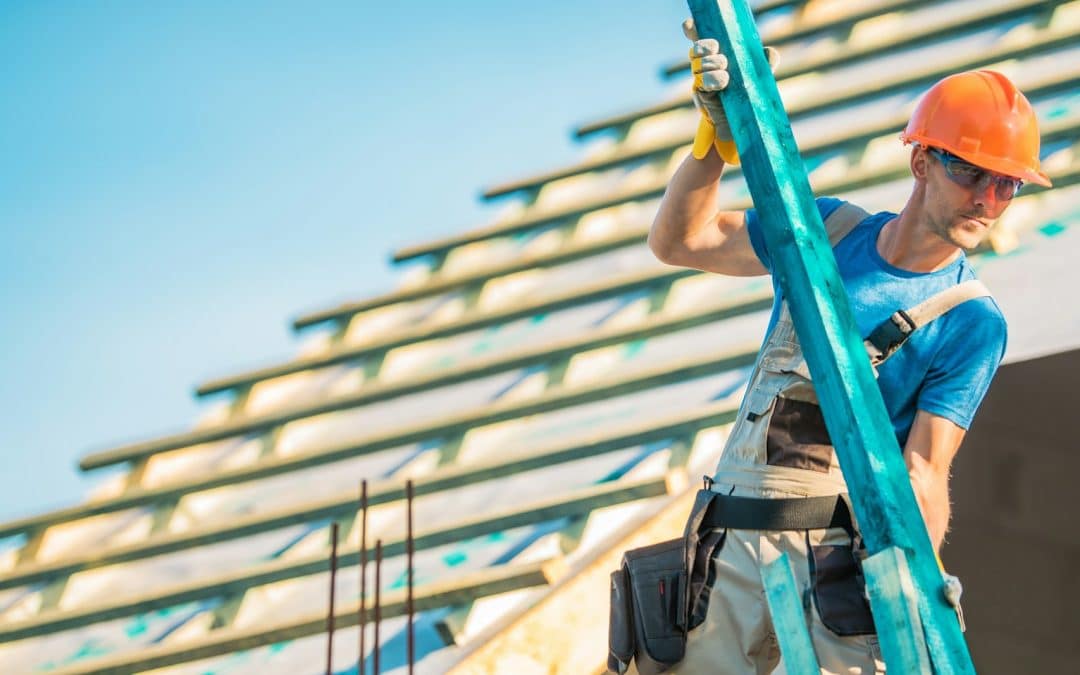Roof emergencies can happen unexpectedly and often require quick thinking. Whether it’s a fallen branch after a storm or sudden leaks during heavy rain, knowing how to handle these situations can make all the difference. Every homeowner should be prepared to take immediate action to prevent further damage until professional help arrives.
Safety is the top priority when dealing with any roof issue. It’s important to quickly assess the situation and ensure no one is at risk. Addressing emergencies with a calm and strategic approach helps protect your home while keeping everyone safe.
Being equipped with practical tips and temporary solutions ensures you are ready for any roofing crisis. Understanding when it’s time to bring in professional assistance is just as crucial as making those initial quick fixes. Proper preparation for future emergencies will give you peace of mind and confidence in keeping your home secure.
Assessing the Damage
The first step in handling an emergency roof repair is to assess the damage properly. Before you rush to your roof, make sure the area is safe. Evaluating safety conditions is crucial, especially after severe weather. Check for any live wires, loose debris, or unstable areas that could cause danger. If you’re uncertain, it’s better to wait until conditions improve, like when a storm subsides.
Once safety is confirmed, identify the immediate concerns. Look for visible damage, such as missing shingles, broken tiles, or leaks. Water entering your home is a primary concern and should be addressed quickly. Also, inspect for any structural damages, like sagging areas, which could indicate deeper issues. A detailed assessment allows you to determine the best temporary solutions, ensuring you don’t overlook crucial areas that need attention.
Remember to take notes or pictures of the damage. This documentation not only helps you plan repairs but is also useful if you need to report the damage to your insurance company. Keep these records organized so they’re easily accessible when needed.
Temporary Solutions to Prevent Further Damage
After assessing the damage, it’s time to apply temporary solutions to prevent further issues. One of the easiest and quickest methods is using tarps. Covering the damaged areas with a tarp can help stop water from getting into your home. Secure the tarp with heavy objects or nail it down if safe to do so.
Another option is using planks, especially if the damage involves holes or larger missing sections. Place planks over these areas as a temporary shield against debris and rainfall. Make sure they are securely positioned to avoid any additional damage.
Quick sealant applications can act as a temporary fix for smaller leaks or cracks. Roof sealants are available in most hardware stores and are easy to apply. Simply follow the instructions on the product. Applying sealant can help limit water entry until a more permanent repair is made.
These temporary measures are not a substitute for proper repairs, but they can significantly minimize damage until professional help arrives. Always prioritize safety and never attempt solutions that put you at risk.
Knowing When to Call a Professional
Handling emergency repairs on your own might not always be possible or safe. Recognize when the damage is too complex for a temporary fix. Extensive roof damage, structural issues, or persistent leaks often require professional intervention. These situations can involve detailed inspections and specialized equipment that only experienced roofers can provide.
Professional expertise ensures that the repairs are done correctly and safely. Expertise is crucial, especially for commercial buildings with complex roofing systems like TPO or modified bitumen. Professionals bring knowledge of various roofing materials and can assess the full extent of damage that might not be visible from a basic inspection.
Attempting repairs beyond your skill level can worsen the situation and potentially lead to more costly repairs. Trusting a professional eliminates this risk and offers peace of mind. Contractors also handle insurance claims, providing documentation and working with your provider for coverage. Knowing when to step back is key to preserving your roof and ensuring it continues to protect your home or business.
Preparing for Future Emergencies
Being prepared for future roofing emergencies is a smart move for any homeowner or business owner. Start by creating a roof emergency kit. Include items like tarps, nails, a hammer, sealant, and a flashlight. Having these tools on hand means you’re ready to act quickly when an emergency arises.
In addition to an emergency kit, implement a regular maintenance and inspection plan. Regularly check your roof for signs of wear, damage, or potential weak spots. Schedule seasonal inspections to catch any issues early, before they become emergencies. Identify potential problem areas, like vulnerable seams or aging shingles, and address them proactively.
Keeping a professional roofing company on standby can also help. Establish a relationship with a trusted contractor so you know whom to call when you need immediate assistance. By preparing ahead of time, you minimize the impact of unexpected roof issues and enhance the longevity of your roof.
Conclusion
Dealing with emergency roof repairs requires a quick and calculated approach. From assessing damage safely to applying temporary fixes, each step is important in minimizing the effects of an unexpected problem. Knowing when to call in professionals can save you from making costly mistakes and ensure the integrity of your roof. Preparing for future emergencies not only reduces stress but also extends the life of your roof.
At Mike Huddleston Roofing Systems, we understand the urgency and complexities of an emergency roof repair. Whether you need help assessing damage or professional repairs for your commercial or residential building, our team is ready to assist. Contact us today to ensure your roof is in the best hands when emergencies strike.

